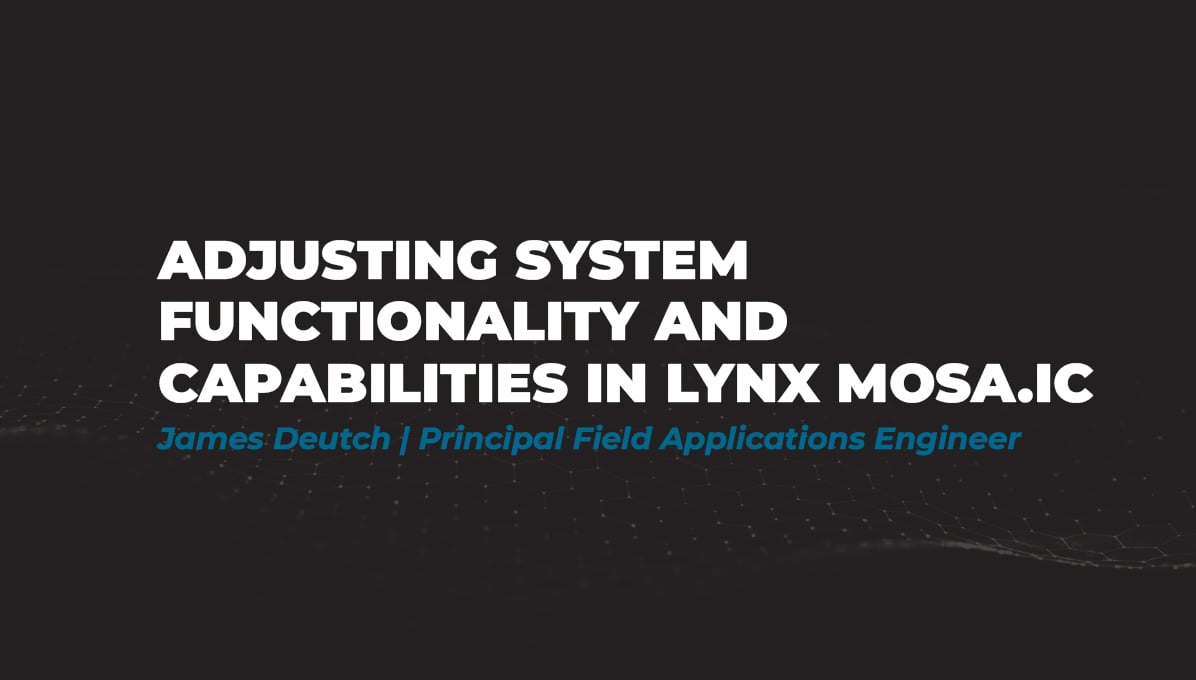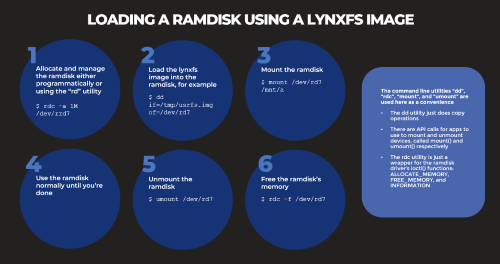Adjusting System Functionality and Capabilities in LYNX MOSA.ic
I recently set up a demo to showcase how a customer can use subjects, also known as rooms, like containers. What I mean by that is that software...
2 min read
 Tim Loveless | Principal Solutions Architect
:
Feb 24, 2020 12:34:50 PM
Tim Loveless | Principal Solutions Architect
:
Feb 24, 2020 12:34:50 PM
_______________
Lynx exhibited at the 28th annual Safety-Critical Systems Symposium on February 11th to 13th 2020 in York, United Kingdom. The SSS is hosted by the UK Safety-Critical Systems Club, a not-for-profit organization whose mission is to raise awareness and facilitate technology transfer in the field of safety-critical systems.
At the symposium, Lynx demonstrated the cache allocation technology capabilities of LYNX MOSA.ic™ on a multicore Intel Xeon D-1541 processor and ENSCO’s IData certifiable cockpit display running on LynxOS-178®.
Presentation highlights included:
Dewi Daniels presented a detailed analysis of the 2 tragic crashes in 2018 and 2019 that grounded the 737 MAX fleet to this day (Feb 2020). The presentation looked at the facts in order to debunk myths surrounding the causes of the accidents. Dewi’s opinion is that the accidents were not caused by lack of FAA oversight, lack of pilot training, nor engineering outsourcing inside Boeing; instead, the causes lie with a failure of system safety engineering and a failure of requirements engineering. Specifically, the lack of redundant angle-of-attack sensors for the MCAS system, and incorrect classification of MCAS as DO-178C DAL-C rather than higher.
Emma Arina Taylor from the Safety and Reliability Society (SaRS) began with a description of the risk of space debris to satellites, both the physical damage it can do and the fuel impact of maneuvering to avoid it. She continued with the lesser-known topic of radio frequency regulation in space. As on Earth, radio spectrum is a finite resource in space, but in space, radio is critical for controlling spaceships and satellites moving at high speeds—and potentially unrecoverable from a missed or late command. Emma continued to discuss the space insurance market. The cost of space insurance is acceptable at present, largely because there have been few significant claims. With large space investments such as SpaceX’s Starlink 12,000 satellite constellation being launched the value of assets in orbit is rising fast, but so too is the risk of an accident.
James Sharp from DSTL described the problems of achieving a multi-core certification including issues such as multi-core interference in shared resources, such as L3 cache, causing problems with WCET (worst case execution time). DSTL’s work on multi-core safety certification predates both CAST-32 and CAST-32A (i.e., is older than 2014), but DSTL agree 100% with CAST-32A. Also described in the presentation were the problems of getting information from your real-time operating system (RTOS) vendor about the internals of their hypervisor, and from your silicon vendor on the internals of your multi-core processor. Multi-core hardware is a problem because in the past with the lack of DO-254 evidence for the chips, a proven in use argument has been used, but DSTL suspects this won't work for multi-core processor hardware. Worse, they worry that with the detailed micro-architectural problems being discovered now, some existing single-core certifications might have to be revisited.

I recently set up a demo to showcase how a customer can use subjects, also known as rooms, like containers. What I mean by that is that software...

Based on several customers inquiries the purpose of this blog is to outline how to Allocate memory to a RAM disk Mount and unmount a RAM disk ...

Not many companies have the expertise to build software to meet the DO-178C (Aviation), IEC61508 (Industrial), or ISO26262 (Automotive) safety...